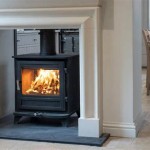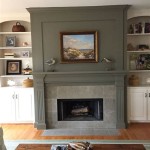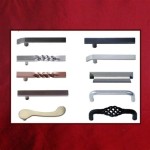Understanding and Addressing Black Soot from Gas Fireplace Logs
Gas fireplaces offer a convenient and aesthetically pleasing alternative to traditional wood-burning fireplaces. They provide warmth and ambiance with the ease of a switch or remote control. However, one common issue that can arise with gas fireplaces, particularly those using ceramic or refractory logs, is the accumulation of black soot. This soot, while typically a sign of incomplete combustion, can indicate various underlying problems that need to be addressed to maintain the fireplace's efficiency, safety, and appearance.
Black soot is primarily composed of elemental carbon. It is a byproduct of the incomplete burning of the gas fuel, which is usually natural gas or propane. Ideally, when gas burns completely, it produces carbon dioxide and water vapor. However, when the combustion process is not optimal, some of the carbon in the fuel doesn't fully oxidize and instead forms fine particles of soot. These particles are then carried by the exhaust gases and deposited on cooler surfaces, such as the fireplace logs, the firebox, or even the surrounding room.
The presence of black soot should not be ignored. While a small amount of soot may be considered normal, excessive soot buildup can indicate a more serious problem that needs prompt attention. Ignoring the issue can lead to a decrease in fireplace efficiency, potential health hazards, and even safety risks.
Causes of Black Soot Formation
Several factors can contribute to the formation of black soot in a gas fireplace. Identifying the root cause is crucial for effectively addressing the problem and preventing its recurrence.
One of the primary causes is insufficient air supply. Gas fireplaces require a specific air-to-fuel ratio for complete combustion. If there is not enough air available, the gas will not burn properly, resulting in the production of soot. This can be due to blocked air vents, obstructions around the fireplace, or an improperly adjusted air shutter on the burner. The air shutter controls the amount of air that mixes with the gas before it is burned. It needs to be set correctly based on the specific fireplace model and the type of gas being used.
Another common cause is improper log placement. The ceramic or refractory logs in a gas fireplace are designed to be arranged in a specific configuration that allows for optimal airflow and combustion. If the logs are placed incorrectly, they can block airflow, leading to incomplete combustion and soot formation. Refer to the manufacturer's instructions for the correct log placement for your specific fireplace model. Over time, logs can also shift, so periodic inspection and adjustment are necessary.
Gas pressure fluctuations can also contribute to soot buildup. If the gas pressure is too low, the gas may not burn completely, resulting in the formation of soot. Conversely, if the gas pressure is too high, it can overwhelm the air supply, leading to incomplete combustion as well. Gas pressure should be checked by a qualified technician. Fluctuations can be caused by issues with the gas supply line or the gas regulator.
Furthermore, improperly sized gas orifices can cause issues. The orifice is a small opening that regulates the amount of gas that flows to the burner. If the orifice is too small, it may not provide enough gas for complete combustion. If it's too large, it can lead to an over-rich mixture that doesn't burn cleanly. Orifice size must be matched to the specific fireplace model and the type of gas being used.
Addressing Black Soot Issues
Once the cause of the black soot formation has been identified, steps can be taken to address the problem. The appropriate solution will depend on the underlying cause.
If insufficient air supply is the culprit, start by checking for any obstructions around the fireplace that may be blocking airflow. Ensure that all air vents are clear and unobstructed. The air shutter on the burner should be adjusted according to the manufacturer's instructions. This may require adjusting the shutter gradually while observing the flame to find the optimal setting. A yellow, flickering flame often indicates insufficient air, while a blue, steady flame usually indicates proper combustion.
If improper log placement is suspected, consult the manufacturer's instructions for the correct log arrangement. Carefully rearrange the logs to ensure that they are positioned as intended, allowing for proper airflow. Also, ensure that logs haven't deteriorated and are not emitting particulate matter. Replacing damaged or degraded logs is often necessary for proper combustion.
If gas pressure fluctuations are suspected, a qualified gas technician should be called to check the gas pressure and ensure that it is within the recommended range. The technician can also identify any potential problems with the gas supply line or the gas regulator. Do not attempt to adjust the gas pressure yourself, as this can be dangerous.
If the gas orifice size is incorrect, it should be replaced with the correct size for the fireplace model and the type of gas being used. This is a task that should be performed by a qualified gas technician. Using the wrong orifice size can be dangerous and can lead to inefficient combustion and soot formation.
Preventative Maintenance for Gas Fireplaces
Regular preventative maintenance is crucial for preventing black soot formation and ensuring the safe and efficient operation of your gas fireplace. A regular maintenance schedule can help prevent issues before they arise, saving time and money in the long run.
An annual inspection by a qualified gas technician is highly recommended. The technician can inspect the fireplace for any potential problems, such as gas leaks, damaged components, or airflow obstructions. They can also clean the burner and check the gas pressure and orifice size.
Regularly clean the fireplace glass and firebox to remove any accumulated soot or debris. This will help to maintain the fireplace's appearance and prevent soot from spreading to other areas. Use a fireplace glass cleaner specifically designed for gas fireplaces, as other cleaners may damage the glass.
Periodically inspect the logs for any signs of damage or deterioration. Replace any damaged or degraded logs to ensure proper combustion. Follow the manufacturer's instructions for cleaning and maintaining the logs.
Ensure that the air vents around the fireplace are kept clear and unobstructed. This will allow for proper airflow and prevent soot formation. Vacuum or dust the area around the fireplace regularly to remove any debris that may be blocking the vents.
By understanding the causes of black soot formation and implementing a regular maintenance schedule, you can help to ensure the safe, efficient, and aesthetically pleasing operation of your gas fireplace for years to come.

Excess Soot Turning Gas Fireplace Logs Black

Is Black Soot From Gas Fireplace Dangerous Shepherd S

Gas Logs Vented Or Not General Inspection Discussion Internachi Forum

What Causes Black Soot Buildup On My Gas Fireplace Logs

6 Reasons Why Is My Gas Fireplace Leaving Black Soot

Chimney Soot And Creosote Dangers Full Service

What Causes Black Soot Buildup On My Gas Fireplace Logs

Fixing Sooting Vent Free Logs By Tstone

What Causes Black Soot From A Propane Fireplace Hunker

Is Black Soot From Gas Fireplace Dangerous All Coast Inspections








